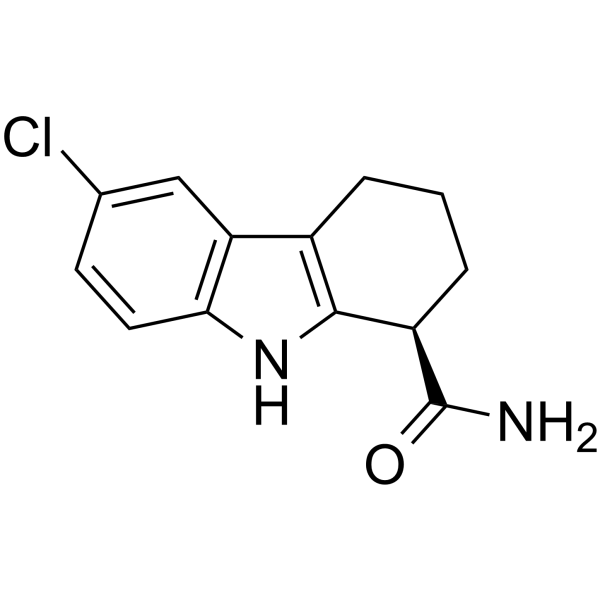
Selisistat R-enantiomer
CAS No. 848193-69-1
Selisistat R-enantiomer( EX-527 (R-enantiomer) )
Catalog No. M26682 CAS No. 848193-69-1
Selisistat R-enantiomer is a SIRT1 inhibitor with much less activity than the R-enantiomer of Selisistat (IC50 of SIRT1 > 100 μM).
Purity : >98% (HPLC)
 COA
COA
 Datasheet
Datasheet
 HNMR
HNMR
 HPLC
HPLC
 MSDS
MSDS
 Handing Instructions
Handing Instructions
| Size | Price / USD | Stock | Quantity |
| 2MG | 177 | Get Quote |


|
| 5MG | 314 | Get Quote |


|
| 10MG | 447 | Get Quote |


|
| 25MG | 714 | Get Quote |


|
| 50MG | 1017 | Get Quote |


|
| 100MG | Get Quote | Get Quote |


|
| 200MG | Get Quote | Get Quote |


|
| 500MG | Get Quote | Get Quote |


|
| 1G | Get Quote | Get Quote |


|
Biological Information
-
Product NameSelisistat R-enantiomer
-
NoteResearch use only, not for human use.
-
Brief DescriptionSelisistat R-enantiomer is a SIRT1 inhibitor with much less activity than the R-enantiomer of Selisistat (IC50 of SIRT1 > 100 μM).
-
DescriptionSelisistat R-enantiomer is a SIRT1 inhibitor with much less activity than the R-enantiomer of Selisistat (IC50 of SIRT1 > 100 μM).
-
In Vitro——
-
In Vivo——
-
SynonymsEX-527 (R-enantiomer)
-
PathwayChromatin/Epigenetic
-
TargetSirtuin
-
RecptorERK| hERG| IFN-γ| JNK| NF-κB| p38 MAPK| STAT| TLR
-
Research Area——
-
Indication——
Chemical Information
-
CAS Number848193-69-1
-
Formula Weight248.71
-
Molecular FormulaC13H13ClN2O
-
Purity>98% (HPLC)
-
SolubilityIn Vitro:?DMSO : 100 mg/mL (402.07 mM)
-
SMILESNC(=O)[C@@H]1CCCc2c1[nH]c1ccc(Cl)cc21
-
Chemical Name——
Shipping & Storage Information
-
Storage(-20℃)
-
ShippingWith Ice Pack
-
Stability≥ 2 years
Reference
1.Liu XQ, et al. [Thymopolypeptides combined with matrine type alkaloids suppress HBV replication]. Zhongguo Zhong Yao Za Zhi. 2016 Apr;41(7):1275-1281. Chinese.
molnova catalog



related products
-
AEM2
SIRT2 inhibitor AEM2 (AEM2) is a selective SIRT2 inhibitor with IC50 of 3.8 uM.
-
Tenovin-6
Tenovin-6 is a small molecule activator of p53 transcriptional activity.
-
Alogliptin
Alogliptin(SYR-322) is a potent, selective inhibitor of DPP-4 with IC50 of <10 nM, exhibits greater than 10, 000-fold selectivity over DPP-8 and DPP-9.



 Cart
Cart
 sales@molnova.com
sales@molnova.com


